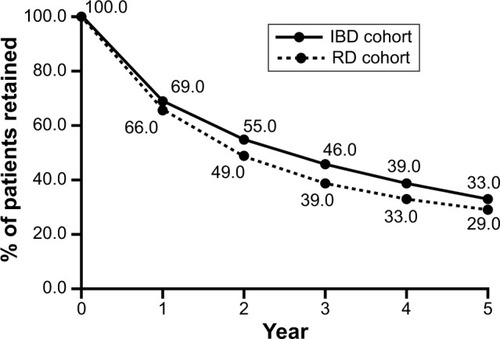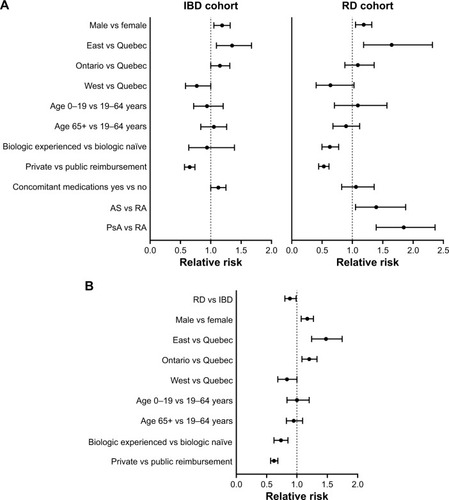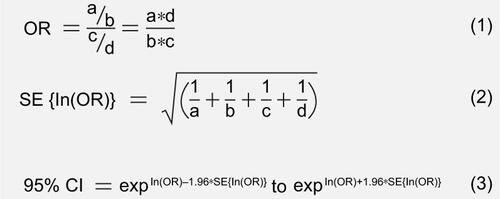Figures & data
Table 1 Patient baseline characteristics in the overall IBD cohort (n=7,806) and RD cohort (n=2,935)
Figure 1 Overall 5-year retention of IBD and RD patients on IFX.
Abbreviations: IBD, inflammatory bowel disease; IFX, infliximab; RD, rheumatologic disease.

Table 2 Unadjusted OR of being retained based on cumulative IFX exposure in the overall IBD and RD cohorts
Figure 2 Relative risk of being retained on IFX at 5 years after controlling for variables of interest in (A) the overall IBD and RD cohort and (B) RD vs IBD patients.

Figure S1 Derivation of pair-wise comparisons.
Notes: The equations used to conduct the pair-wise comparisons. Equation 1 was used to calculate the OR. Equation 2 was used to calculate SE which was used in Equation 3 to calculate the 95% CI of the estimated OR. “a” is the number of patients who were retained in the subsequent 12 months, “c” is the number of patients who were retained in the reference year, “b” the number of patients who were not retained in the subsequent 12 months, and “d” is the number of patients who were not retained in the reference year.
Abbreviations: OR, odds ratio; SE, standard error.

Table S1 Unadjusted OR of being retained based on cumulative IFX exposure in subpopulations of IBD patients (OR [95% CI])
Table S2 Unadjusted OR of being retained based on cumulative IFX exposure in subpopulations of RD patients (OR [95% CI])
